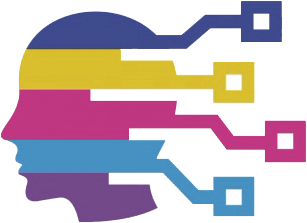In the ever-evolving landscape of artificial intelligence, few names evoke as much intrigue as Elon Musk’s xAI. Recently, Musk’s team managed to unveil Grok-3, a leading AI model, in what can only be described as record time for the industry. This rapid release has not only made waves within the tech community but has also sparked conversations about the potential to rival established players like OpenAI, particularly the widely popular ChatGPT. The implications of this development could reshape user engagement in AI technology.
Grok-3’s ascendance in the Chatbot Arena isn’t just a technical achievement; it’s a strategic move that appears to be carefully orchestrated. While Musk’s other ventures often make headlines for their audacity or controversy, his commitment to establishing the greatness of xAI seems to pivot towards functionality and user experience. By elevating Grok-3 to the top of the App Store, Musk has positioned his AI model not merely as a contender but as a legitimate competitor to ChatGPT, eliciting curiosity about how this rivalry will unfold.
While having a cutting-edge model like Grok-3 is noteworthy, the real challenge lies in cultivating a user base that can match or exceed that of existing giants. OpenAI has reportedly reached 400 million weekly active users as of late, showcasing a substantial increase since the previous year. In contrast, Grok-3, despite its fresh deployment, still trails significantly in user engagement. This raises a pivotal question: can Musk’s xAI challenge OpenAI’s dominance, and if so, what strategies will it employ?
Musk seems acutely aware that simply releasing a strong product is insufficient for sustained success. His plans include launching voice interactions and desktop applications, which suggests a forward-thinking approach to user experience. This contrasts with the limited scope of other AI tools and indicates Musk’s understanding of the importance of adaptability in a competitive tech ecosystem. By focusing on user interaction and accessibility, xAI might just be able to carve out a niche that attracts users looking for alternatives to ChatGPT.
What sets xAI apart from OpenAI is not just its technology but the diversity of its product roadmap. While OpenAI has committed itself predominantly to language models and interactive applications, Grok-3 appears to be exploring novel territories, including potential AI gaming ventures. This move opens up exciting opportunities that could captivate users, particularly in genres where interactive AI can offer unique gameplay experiences. However, details surrounding these initiatives remain sparse, making it crucial for xAI to clarify its objectives and offerings to gain traction.
Despite its ambition, it’s essential to recognize the challenges ahead. The foundational research on which Grok-3 is built is still catching up to that of OpenAI. A retrospective analysis from experts highlights Grok-3’s capabilities as relatively competitive but not groundbreaking when juxtaposed against ChatGPT’s demonstrated capabilities. While ambition can drive innovation, it remains to be seen whether Musk’s drive will translate into a model robust enough to sustain growth in user engagement over the long haul.
The context within which xAI operates is also important—Musk’s political and corporate landscape has seen a fair amount of turbulence. His social media platform, known as X, has become intertwined with his AI aspirations. As the landscape continues to shift, the potential for Grok-3’s success depends on Musk’s ability to stabilize his other ventures while simultaneously pushing for advancements in AI. The juxtaposition of executive bonuses at tech firms like Meta amidst employee dissatisfaction reflects a critical need for transparency and trust in corporate governance, which Musk must navigate carefully.
Furthermore, Musk’s decision to focus on user-centric development could be his trump card against competitors. Current trends indicate that AI users are not merely driven by technology performance; they care about the ethical dimensions of AI, trustworthiness, and how these tools can adapt to their needs. If xAI can position Grok-3 as both innovative and benevolent in its operational ethos, it may gather momentum against established players.
The emergence of Grok-3 establishes a fascinating rivalry in the realm of AI, where Musk’s audacity meets established incumbents like OpenAI. While the journey ahead for xAI is fraught with challenges—from growing a user base to continuously evolving its products—the potential exists for significant disruptions in the market. As developments unfold, the ultimate litmus test will be whether Grok-3 can transform its promise into sustained user engagement and market penetration. In a race characterized by both technological prowess and user experience, the stakes have never been higher.

